Matthew Aguirre
Judy
Automatic Identification of Driving Maneuver Patterns using a Robust Hidden Semi-Markov Models
Nov 13, 2023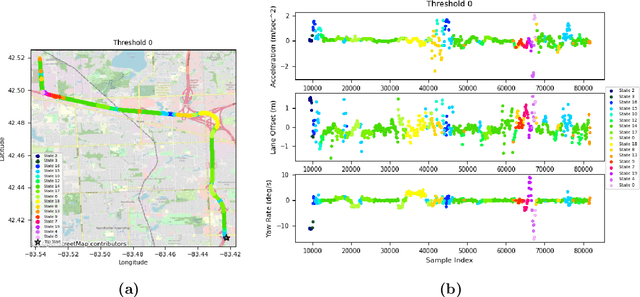

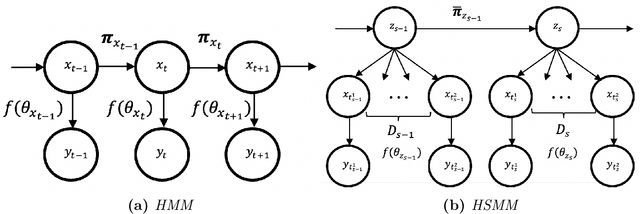

Abstract:There is an increase in interest to model driving maneuver patterns via the automatic unsupervised clustering of naturalistic sequential kinematic driving data. The patterns learned are often used in transportation research areas such as eco-driving, road safety, and intelligent vehicles. One such model capable of modeling these patterns is the Hierarchical Dirichlet Process Hidden Semi-Markov Model (HDP-HSMM), as it is often used to estimate data segmentation, state duration, and transition probabilities. While this model is a powerful tool for automatically clustering observed sequential data, the existing HDP-HSMM estimation suffers from an inherent tendency to overestimate the number of states. This can result in poor estimation, which can potentially impact impact transportation research through incorrect inference of driving patterns. In this paper, a new robust HDP-HSMM (rHDP-HSMM) method is proposed to reduce the number of redundant states and improve the consistency of the model's estimation. Both a simulation study and a case study using naturalistic driving data are presented to demonstrate the effectiveness of the proposed rHDP-HSMM in identifying and inference of driving maneuver patterns.
A deep learning classifier for local ancestry inference
Nov 04, 2020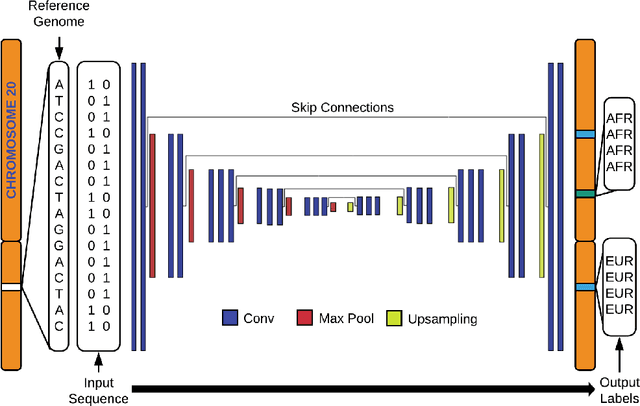

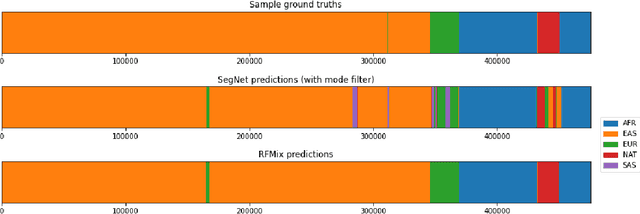
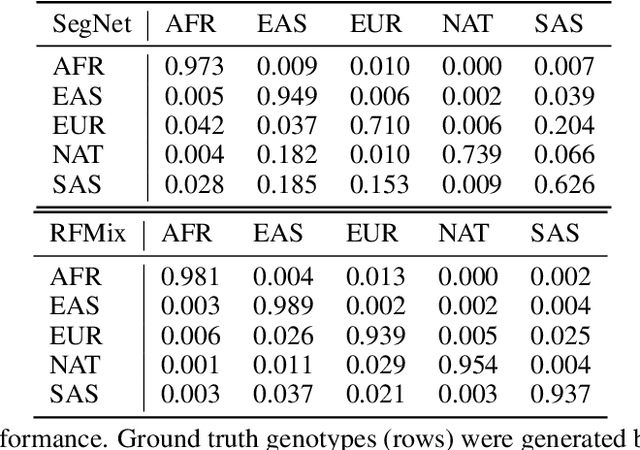
Abstract:Local ancestry inference (LAI) identifies the ancestry of each segment of an individual's genome and is an important step in medical and population genetic studies of diverse cohorts. Several techniques have been used for LAI, including Hidden Markov Models and Random Forests. Here, we formulate the LAI task as an image segmentation problem and develop a new LAI tool using a deep convolutional neural network with an encoder-decoder architecture. We train our model using complete genome sequences from 982 unadmixed individuals from each of five continental ancestry groups, and we evaluate it using simulated admixed data derived from an additional 279 individuals selected from the same populations. We show that our model is able to learn admixture as a zero-shot task, yielding ancestry assignments that are nearly as accurate as those from the existing gold standard tool, RFMix.
 Add to Chrome
Add to Chrome Add to Firefox
Add to Firefox Add to Edge
Add to Edge